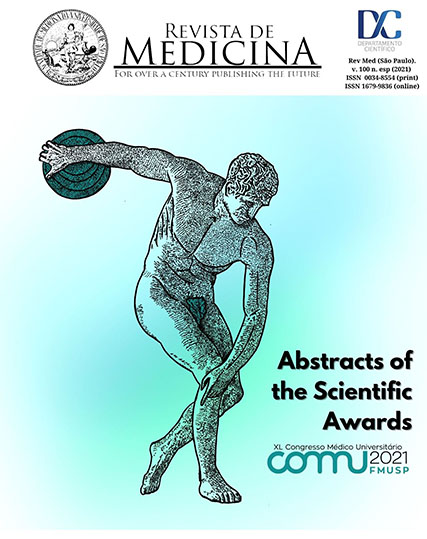Epidemiology of skin cancer in a tertiary hospital in southern Brazil
DOI:
https://doi.org/10.11606/issn.1679-9836.v100iespp6-6Palavras-chave:
Medical oncology, Skin diseases, Skin neoplasms, MelanomaResumo
Introduction: Skin cancer is the most prevalent cancer in Brazil and responsible for a significant portion of diagnosed malignant tumors. The study of the prevalence of the disease is crucial to a better understanding of its distribution and its impact on the population. Objective: To describe the epidemiology of skin cancer in a tertiary reference hospital for cancer treatment in southern Brazil. Methodology: Observational, descriptive and cross-sectional study carried out from the analysis of the Hospital Cancer Registry of a reference center for cancer in southern Brazil. Qualitative variables were described by absolute and relative frequencies and compared using the Chi-Square test. Epidemiological variables were analysed from a time frame from 2010 to 2014 and the study of survival from a cut from 2005 to 2009. Survival rates were calculated using the Kaplan-Meier method and compared using the Long-Rank test. For all tests, a significance level of 5% was considered. Results: 2224 cases of skin cancer were diagnosed and treated between 2010 and 2014, being 1961 (88.2%) cases of non-melanoma cancer (NMC) and 263 (11.8%) of melanoma cancer (MC). Among men, the age group between 60 and 69 years had the highest proportion of the diagnosis (29.2%), while among women the most affected age group was above 75 years (38.9%). Males accounted for 51.3% of the cases of NMC, but 40.7% of the cases of MC (p < 0.01). The face was the affected site in 70.2% of the cases of NMC and 14.8% of the cases of MC (p < 0.001). Overall survival in the MC was 94.1% in the first year, 85.9% in the second and 71.2% in the fifth (p < 0.001); for NMC, these values were 95.6%, 89.4% and 77.8% respectively (p < 0.001). In the MC, survival among men dropped from 88.5% in the first year to 51.2% in the fifth year, while for women the reduction was from 95.7% to 83.4% (p ≤ 0.001). In the NMC, survival in males decreased from 96.1% to 76.0% from the first to the fifth year, and for women it decreased from 94.8% to 78.7% (p ≤ 0.664). Discussion and Conclusion: According to the prevalence of histological types already established, the proportion of NMC was higher than MC in the sample of this study. The predominant site of involvement of the NMC was the face, while the MC was more prevalent in other parts of the body. In addition, males were more frequent among cases of NMC, while females were more prevalent in MC. Furthermore, the present study showed a difference in survival between the sexes in the MC, which was lower among men, while in the NMC this difference was not significant.
Downloads
Downloads
Publicado
Edição
Seção
Licença
Copyright (c) 2021 João Victor Brincas Ramos, Isabela do Prado Nascimento, Guilherme Vicentini

Este trabalho está licenciado sob uma licença Creative Commons Attribution-ShareAlike 4.0 International License.




